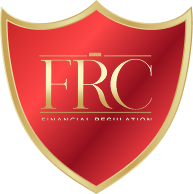Corporate governance plays a critical role in shaping investment risk. Strong governance structures enhance transparency, accountability, and ethical business practices, reducing the likelihood of financial misconduct and company failure. Conversely, weak governance increases risks related to fraud, mismanagement, and regulatory penalties.
For investors, understanding corporate governance is essential for assessing long-term financial stability and risk exposure. This article explores how corporate governance affects investment risk, the key principles of good governance, and real-world case studies illustrating its impact.
Understanding Corporate Governance
Corporate governance refers to the system of rules, practices, and processes that direct and control a company. It defines relationships between stakeholders, including shareholders, management, and regulatory bodies, ensuring that businesses operate in a fair and transparent manner.
Board Structure and Oversight – The composition, independence, and role of the board of directors.
Transparency and Disclosure – How companies report financial and operational information.
Shareholder Rights – Protection and engagement of minority and institutional investors.
Executive Compensation – Aligning management incentives with company performance.
Risk Management and Internal Controls – Measures to prevent fraud and financial misstatements.
Good corporate governance ensures that businesses are managed responsibly, reducing investment risk and increasing shareholder confidence.
How Corporate Governance Affects Investment Risk
Poor governance can lead to corporate scandals, eroding investor trust. Companies with strong governance frameworks are less likely to engage in unethical activities such as accounting fraud, insider trading, or financial misreporting.
Example:
The Enron scandal (2001) resulted from fraudulent accounting practices, leading to billions in losses and the company's collapse. Weak board oversight and conflicts of interest contributed to the crisis.
Companies with strong governance practices provide clear and timely financial disclosures, allowing investors to make informed decisions. Lack of transparency increases uncertainty and investment risk.
Example:
Tesla’s corporate governance issues (including concerns over board independence and CEO influence) have led to volatile stock performance and regulatory scrutiny.
Corporate governance frameworks include internal controls and risk management policies to safeguard assets and mitigate financial risks. These measures prevent excessive risk-taking and protect investor capital.
Example:
Lehman Brothers’ collapse (2008) was partly due to poor risk management, with excessive exposure to subprime mortgages and inadequate oversight.
Key Corporate Governance Principles and Their Impact on Investment Risk
A well-structured board with independent directors ensures effective oversight and reduces conflicts of interest.
Impact on Investment Risk:
✔ Reduces chances of executive mismanagement
✔ Increases accountability and investor trust
Companies with strong ethical frameworks attract long-term investors and avoid legal and reputational risks.
Impact on Investment Risk:
✔ Protects against lawsuits and regulatory fines
✔ Enhances long-term business sustainability
Excessive or misaligned CEO pay and incentives can encourage short-term profit-seeking over long-term growth.
Impact on Investment Risk:
✔ Aligns management decisions with shareholder value
✔ Reduces risk of unethical decision-making
Companies that respect minority shareholder rights and encourage active participation create a more stable investment environment.
Impact on Investment Risk:
✔ Prevents corporate actions that harm investors
✔ Improves governance responsiveness to shareholder concerns
Companies that adhere to strict regulatory and compliance standards reduce the risk of fines, lawsuits, and operational disruptions.
Impact on Investment Risk:
✔ Minimises exposure to legal penalties
✔ Enhances credibility and investor confidence
The Role of Corporate Governance in Different Types of Investments
Strong governance increases shareholder value and reduces volatility.
Poor governance can lead to stock crashes, delistings, or lawsuits.
Companies with good governance maintain strong credit ratings, reducing default risk.
Weak governance can lead to bond downgrades and rising borrowing costs.
Governance structures influence exit strategies, profitability, and regulatory risks.
Startups with poor governance struggle to attract funding.
Weak governance is a significant risk factor in developing economies.
Investors often demand higher risk premiums for countries with poor governance frameworks.
Case Studies: Corporate Governance Failures and Investment Losses
Enron used off-balance-sheet entities to hide debt and inflate profits.
Investors lost billions, and the company declared bankruptcy.
Highlighted the need for independent auditors and transparent financial reporting.
Volkswagen manipulated emissions data, deceiving regulators and consumers.
The stock price dropped over 30%, and the company paid billions in fines.
Exposed governance weaknesses in compliance and ethical leadership.
German fintech company Wirecard falsely reported €1.9 billion in missing funds.
Lack of regulatory oversight and weak board independence contributed to the fraud.
Investors faced massive losses as the company collapsed.
These cases demonstrate how governance failures can destroy shareholder value and increase investment risk.
Best Practices for Investors to Assess Corporate Governance Risk
Review annual reports, proxy statements, and ESG disclosures.
Check for board independence, risk management policies, and executive pay structures.
Assess the track record of company directors and executives.
Look for conflicts of interest or related-party transactions.
Investigate whether the company has faced fines, lawsuits, or government investigations.
Check governance rankings and corporate governance scores.
Identify whether minority shareholders have voting rights and influence over key decisions.
Beware of companies with dual-class share structures that favour insiders.
MSCI ESG Ratings, ISS Governance Scores, and Sustainalytics provide governance risk assessments.
Consider investing in companies with high ESG ratings for lower governance-related risks.
Bringing It All Together
Corporate governance plays a crucial role in shaping investment risk. Companies with strong governance frameworks provide transparency, ethical leadership, and effective risk management, reducing the likelihood of financial misconduct and instability.
✔ Good corporate governance enhances investor confidence and financial stability.
✔ Weak governance increases the risk of fraud, mismanagement, and regulatory fines.
✔ Investors should evaluate governance practices before investing to mitigate risks.
✔ Corporate governance failures have led to major financial losses in history.
By prioritising investments in well-governed companies, investors can protect their capital, reduce risk exposure, and achieve long-term success.
Finance students boost their career prospects by obtaining the Investment Advisor Certification.
Be the first to know about new class launches and announcements.


Financial writer and analyst Ron Finely shows you how to navigate financial markets, manage investments, and build wealth through strategic decision-making.
